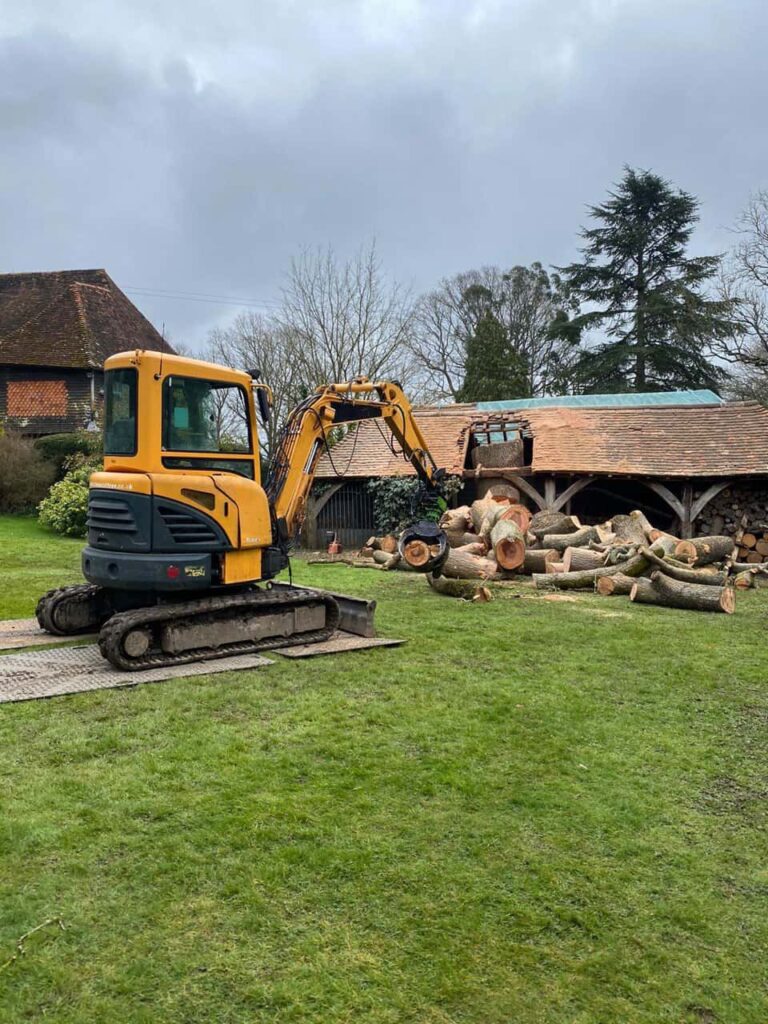Introduction: Growing fruit trees in your garden or orchard can be a rewarding experience. However, proper pruning is essential to ensure a bountiful harvest and healthy trees. Pruning fruit trees helps with fruit production and maintains the tree’s overall health and structure. In this blog post, presented by Stowmarket Tree Surgeons, we will guide you through pruning fruit trees to maximise your harvest.
The Importance of Pruning Fruit Trees
Pruning fruit trees offers numerous benefits, including:
- Improved Air Circulation: Pruning opens up the canopy, allowing better airflow through the branches. This reduces the risk of diseases like apple scab and brown rot.
- Sunlight Penetration: Thinning the canopy lets more sunlight reach the inner branches and fruit, which is crucial for fruit development and ripening.
- Removal of Diseased or Dead Branches: Pruning allows you to identify and remove diseased or dead branches before they can spread problems to the rest of the tree.
- Structural Integrity: Proper pruning strengthens the tree’s structure, reducing the risk of branch breakage due to heavy fruit loads or strong winds.
When to Prune Fruit Trees
The best time to prune fruit trees is during late winter or early spring, while the trees are dormant before new growth begins. This minimises stress on the tree and encourages vigorous spring growth.
Pruning Techniques for Fruit Trees
- Thinning: Remove crowded, weak, or overlapping branches to improve air circulation and sunlight penetration—thin branches to create an open canopy.
- Heading Back: Heading back involves cutting back the ends of branches to promote branching and bushier growth. This technique is often used to control the height and shape of the tree.
- Renewal Pruning: For older fruit trees, consider renewal pruning. Remove one-third of the oldest branches yearly to encourage new, healthy growth.
- Remove Suckers and Water Sprouts: Suckers are shoots that grow from the tree’s rootstock and should be removed. Water sprouts are vertical shoots that grow upward from branches; these should also be pruned to maintain the tree’s shape.
Pruning Specific Fruit Trees
Different fruit trees have unique pruning requirements. Here are some quick tips for specific types:
- Apple Trees: Apple trees benefit from annual pruning to maintain their shape and encourage fruiting spurs.
- Peach Trees: Peach trees should be pruned to an open centre or vase shape to allow sunlight and air circulation.
- Cherry Trees: Prune cherry trees in the summer to avoid disease transmission and focus on removing dead or diseased branches.
- Pear Trees: Pear trees benefit from regular thinning and pruning to encourage fruit production.
Conclusion: Pruning fruit trees is vital for any orchard or backyard garden. When done correctly, it enhances fruit production, maintains tree health, and improves the overall aesthetics of your garden. Remember that pruning is a skill that improves with practice, and consulting with a professional like Stowmarket Tree Surgeons can help you make the most of your fruit trees. You’ll enjoy a bountiful harvest of delicious, homegrown fruits by following the proper techniques and timing.
Call us on: 01449 706 096
Click here to find out more about Stowmarket Tree Surgeons
Click here to complete our contact form and see how we can help with your tree’s needs.

